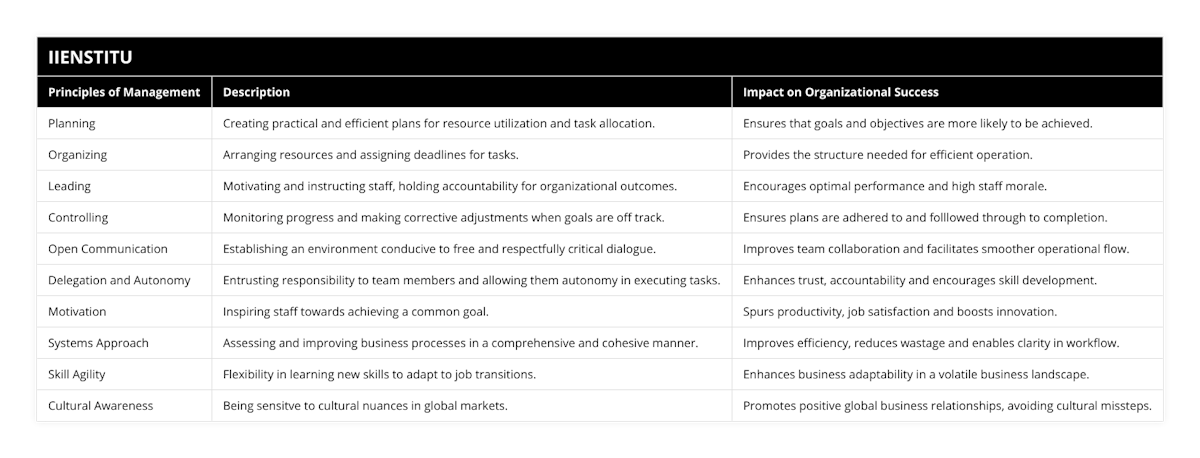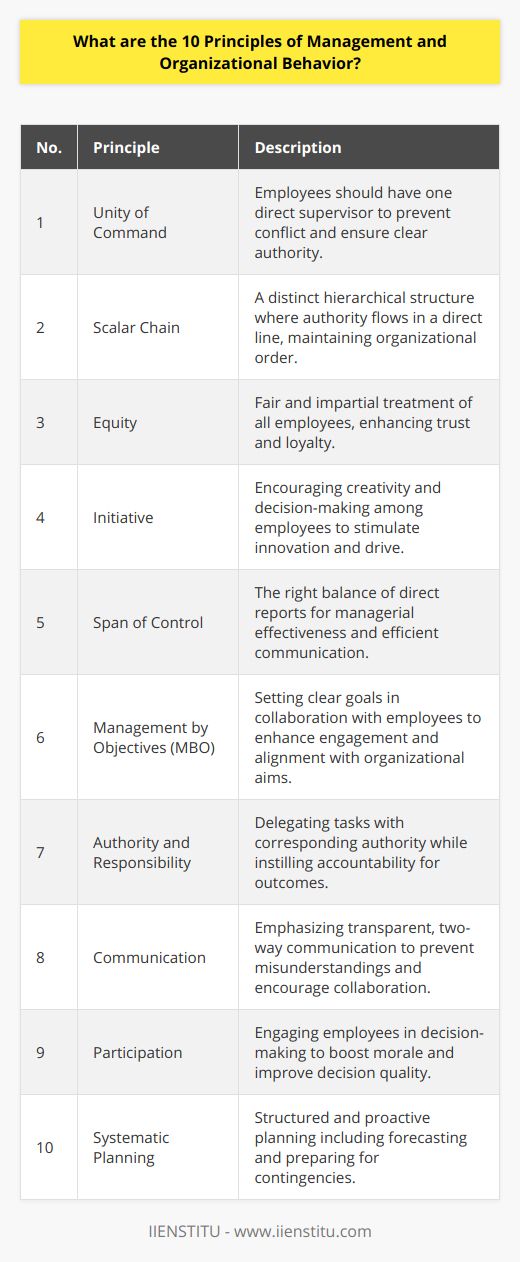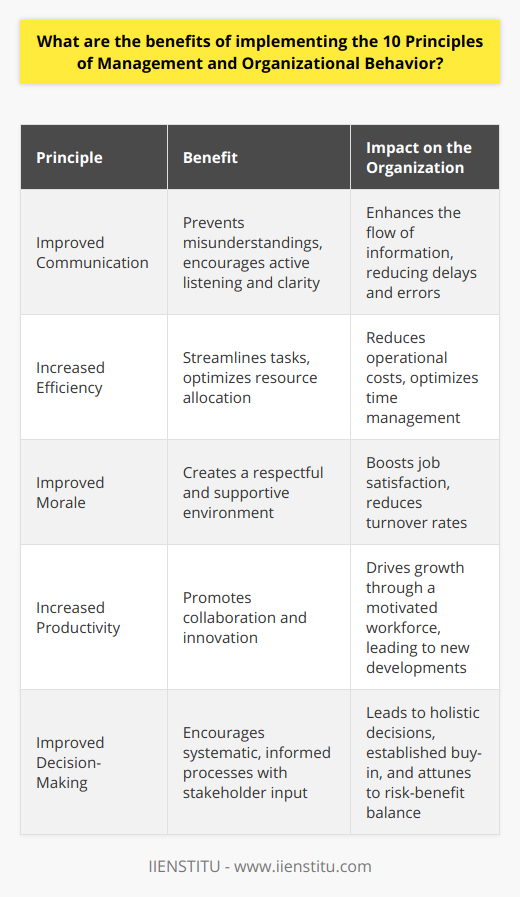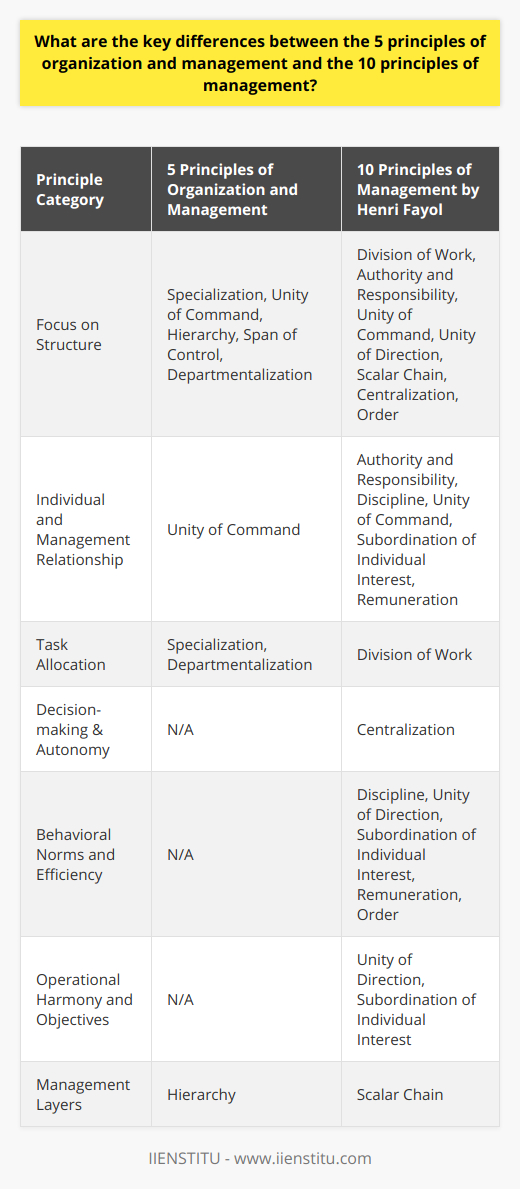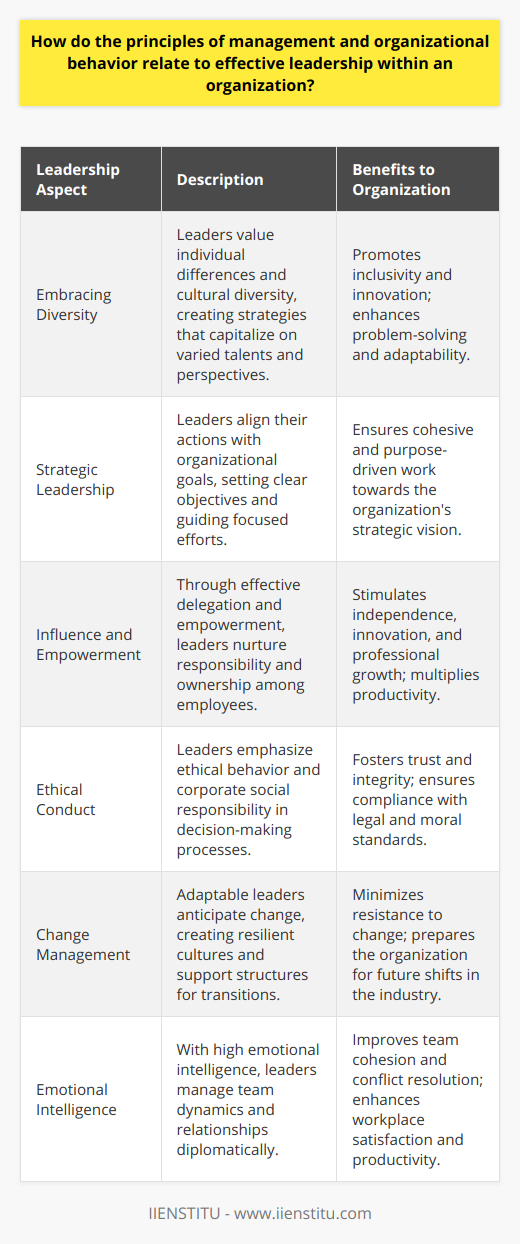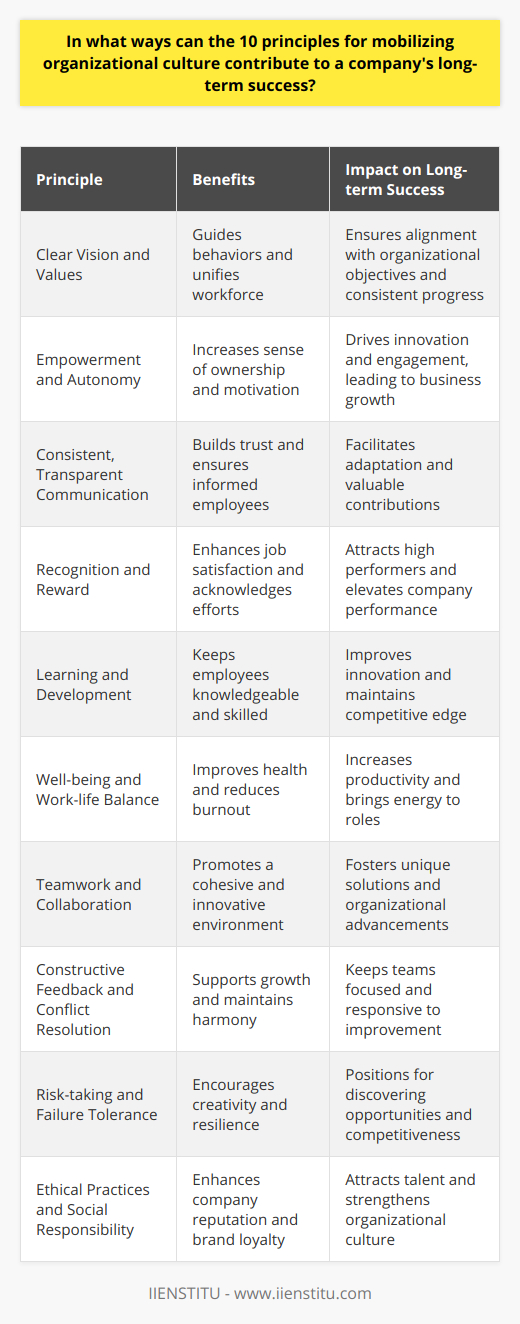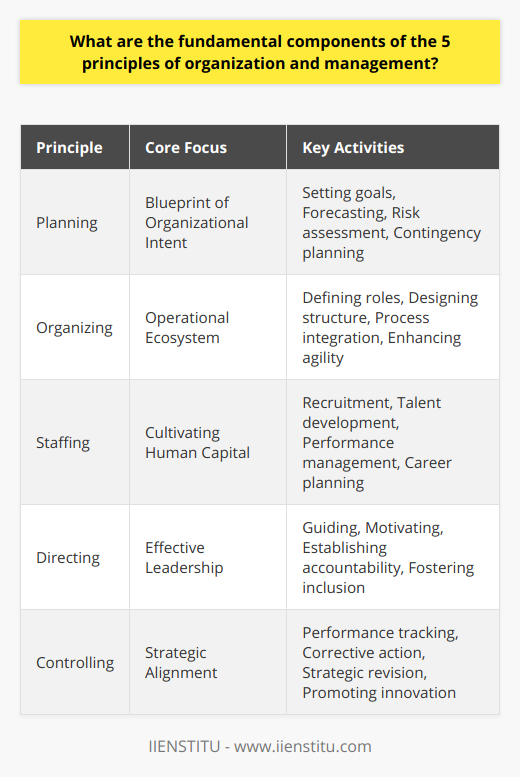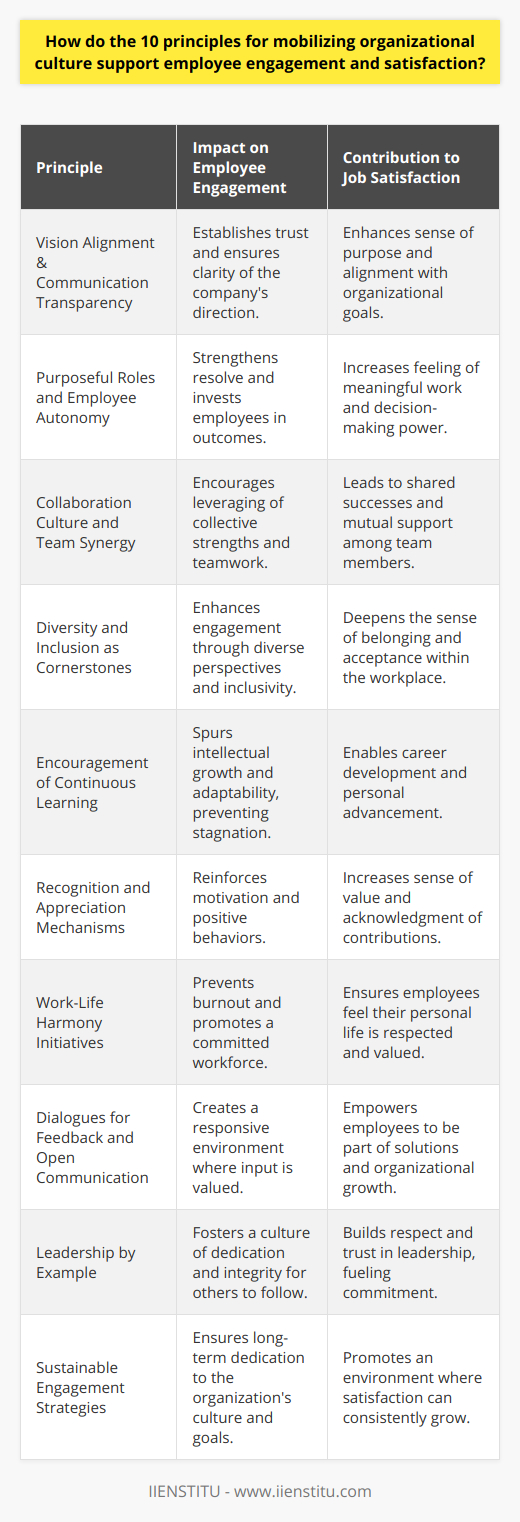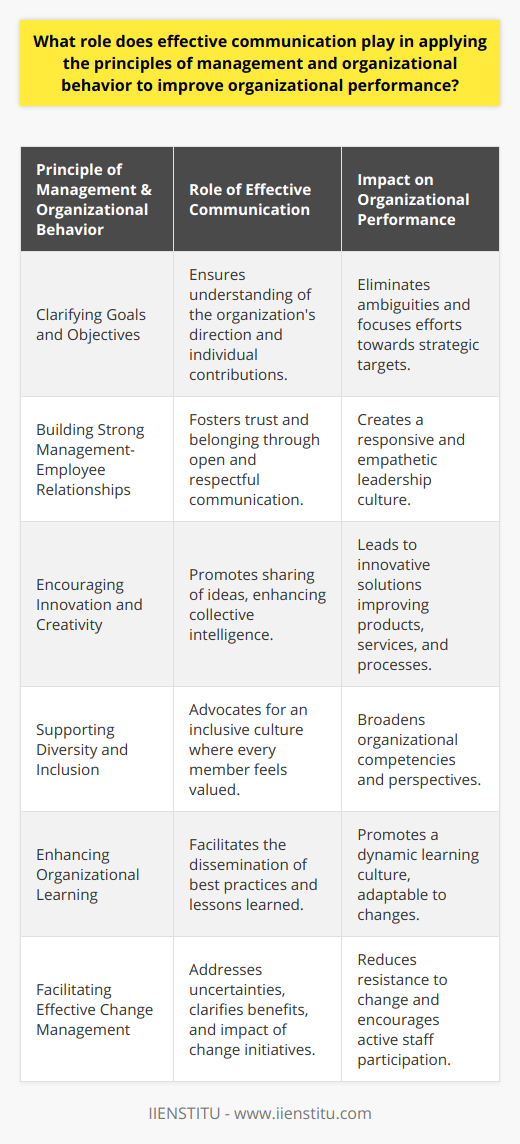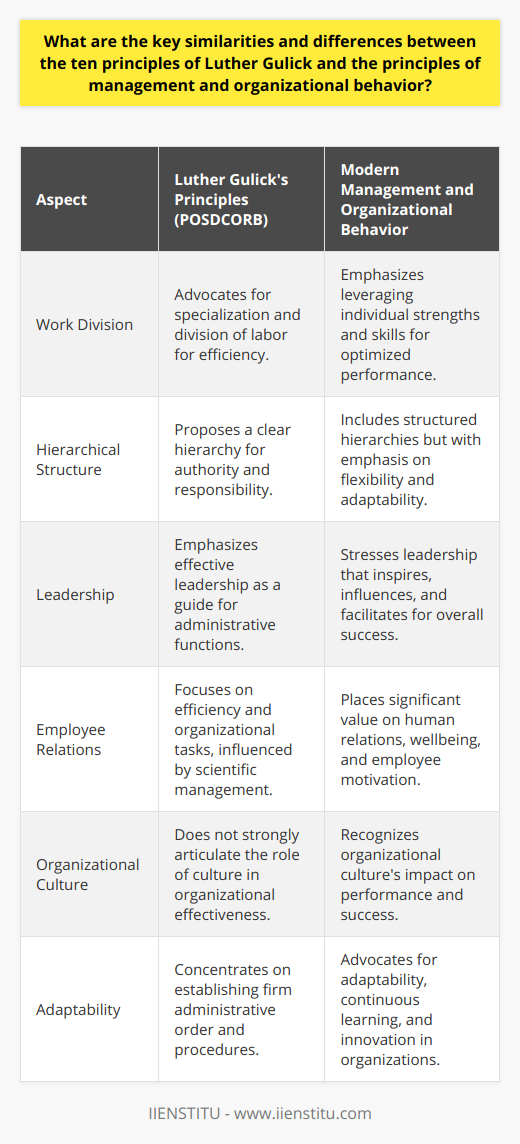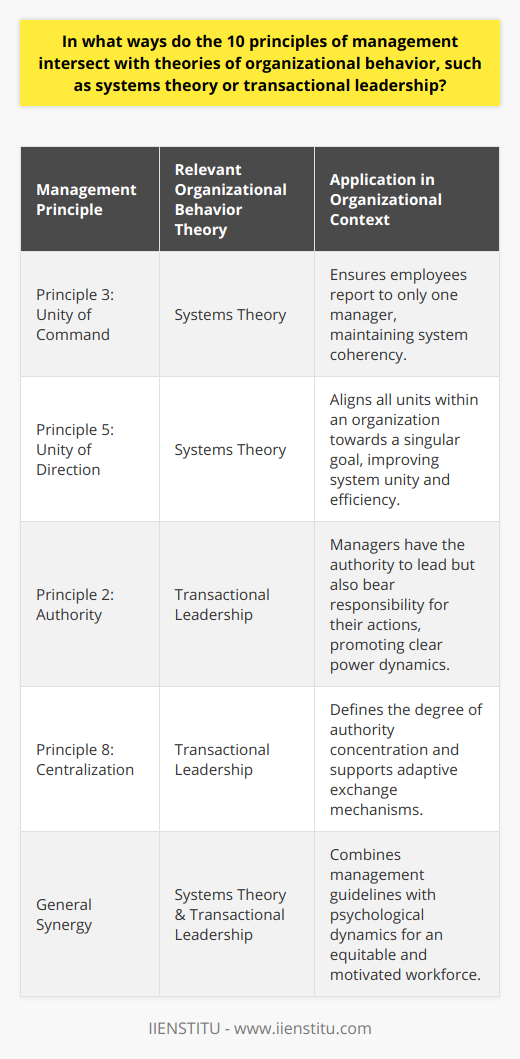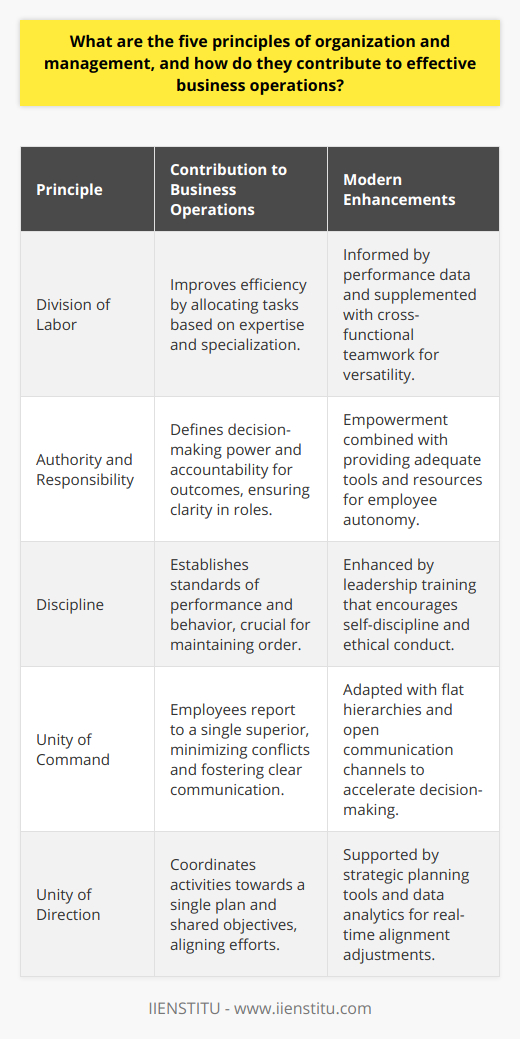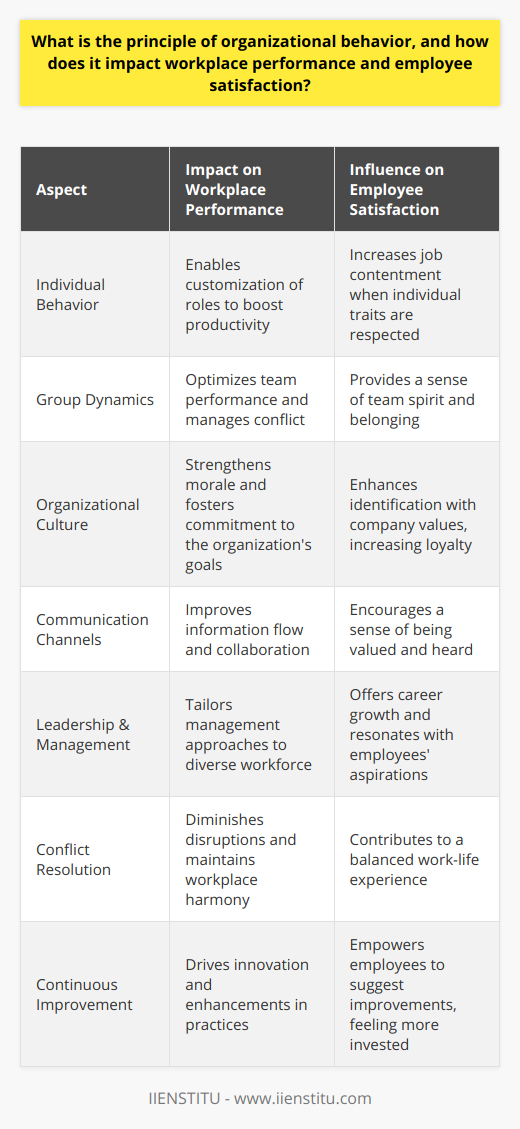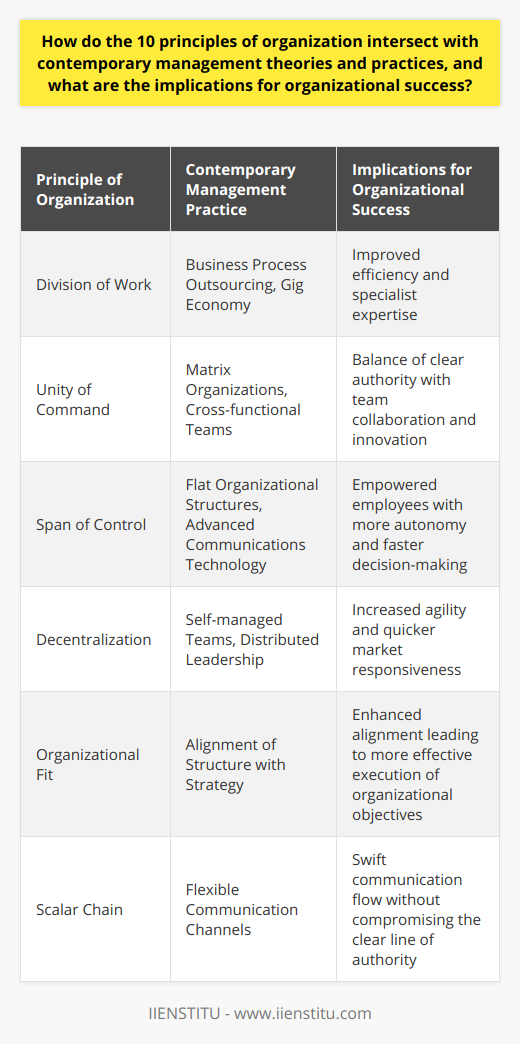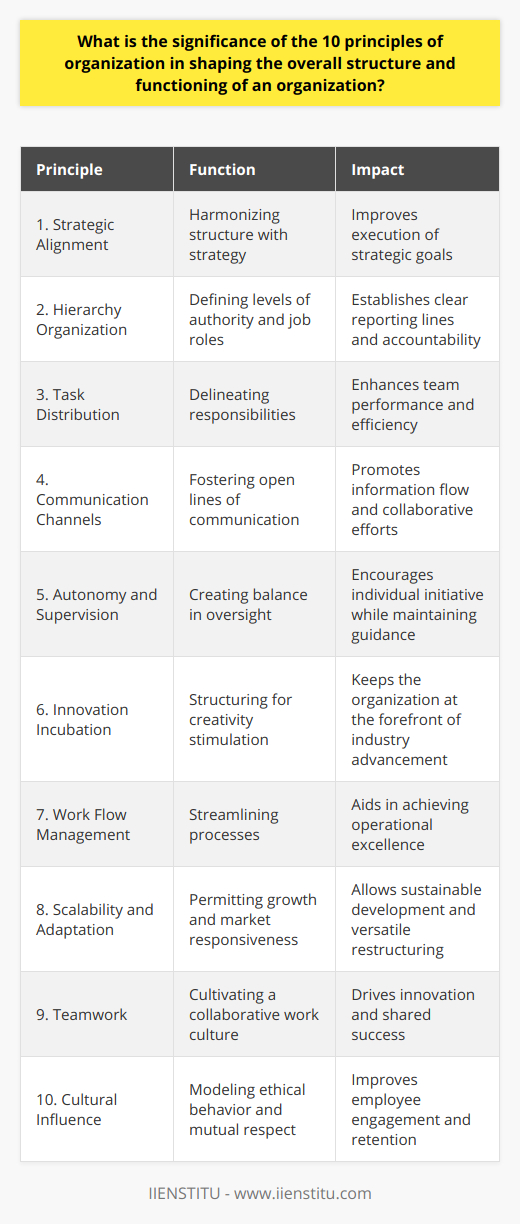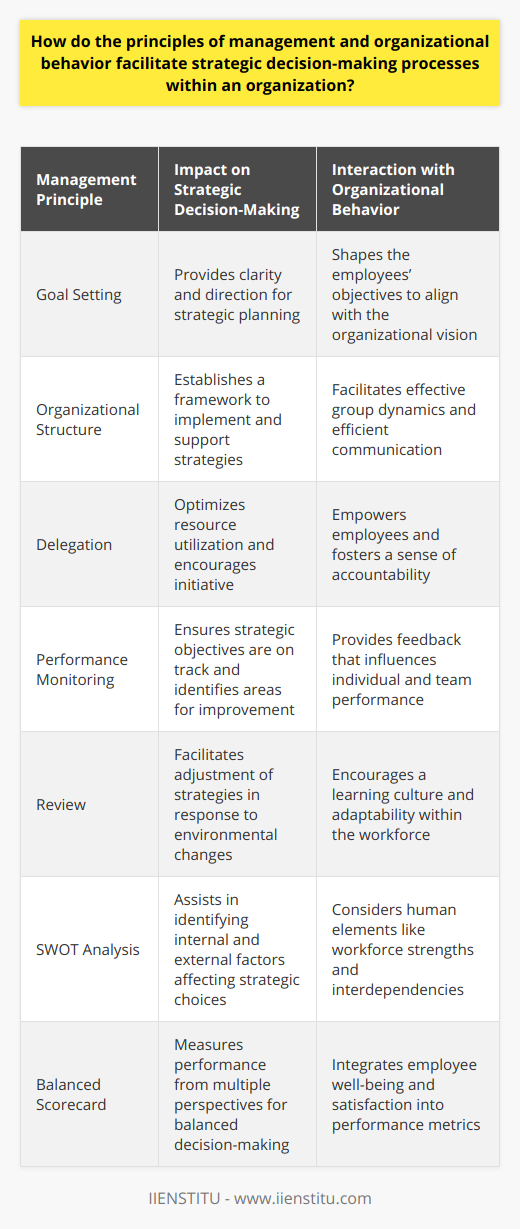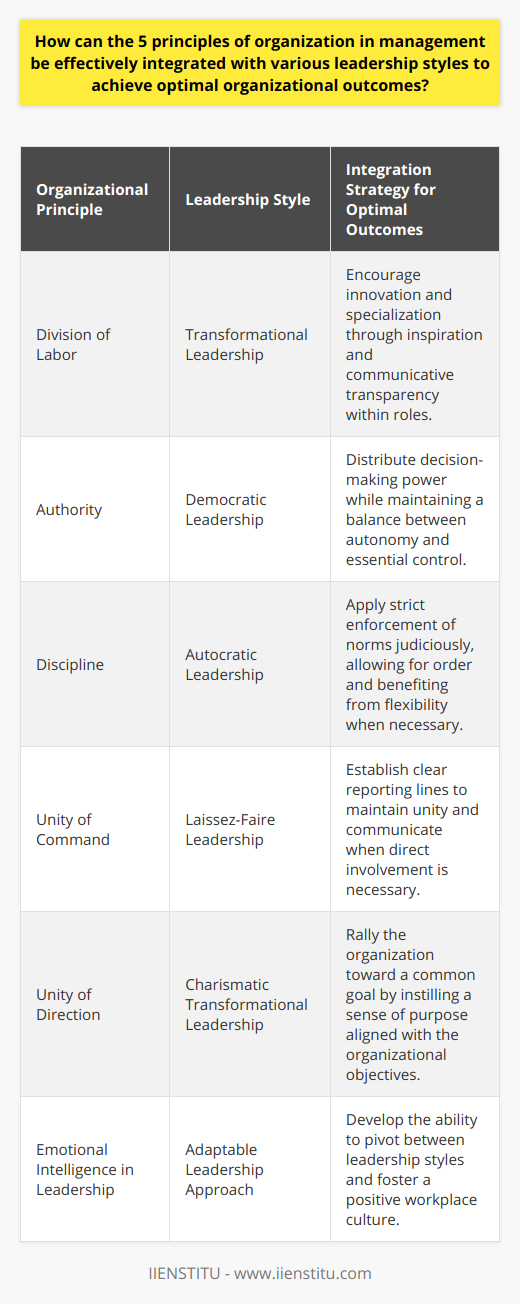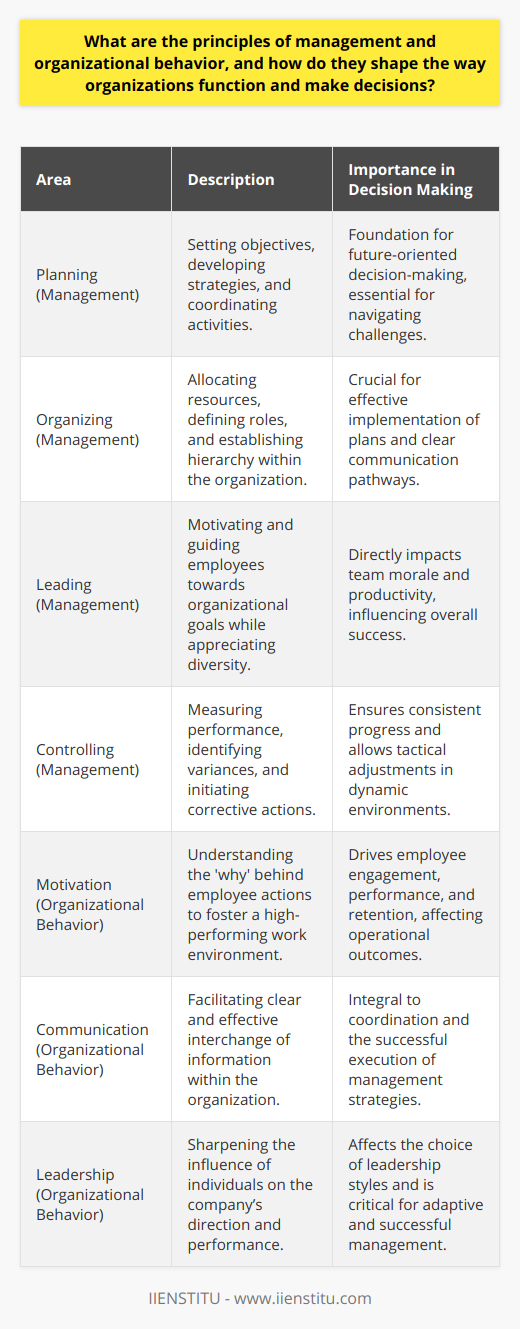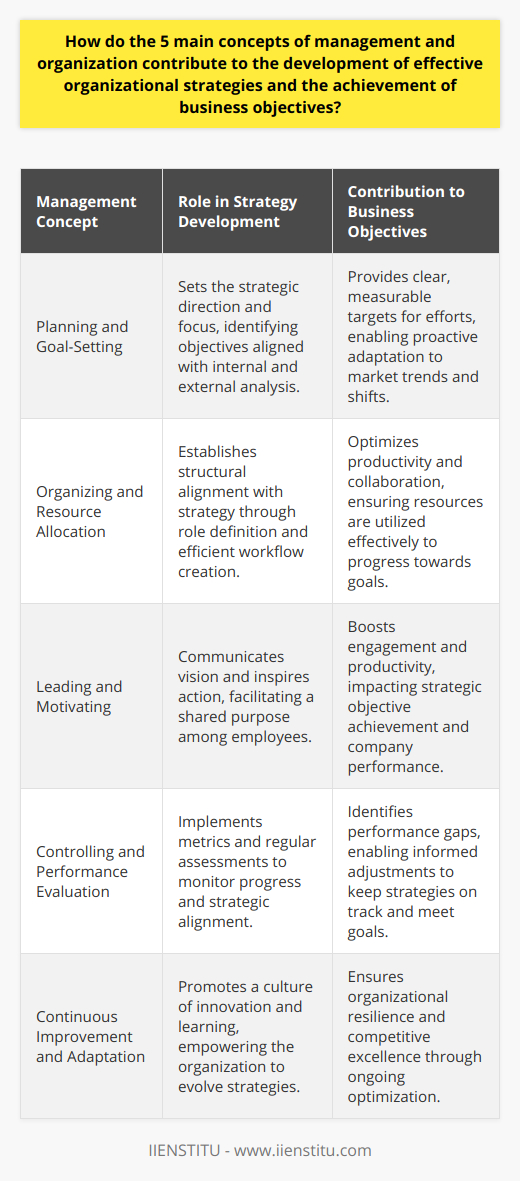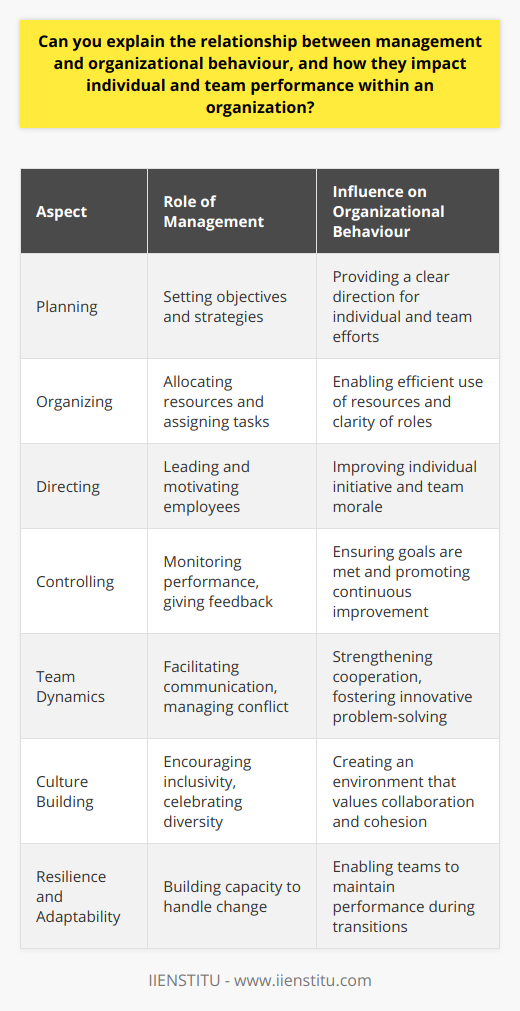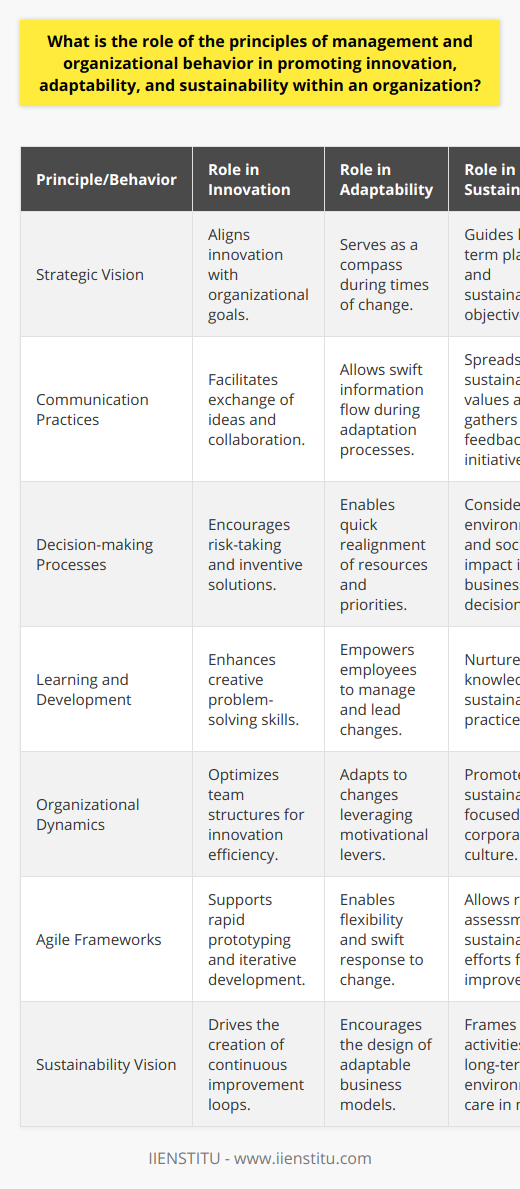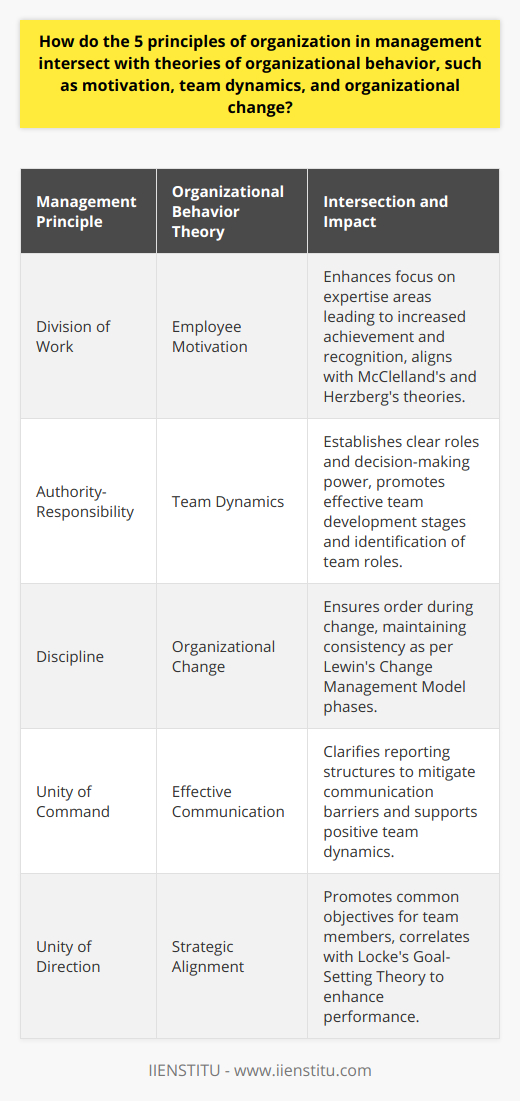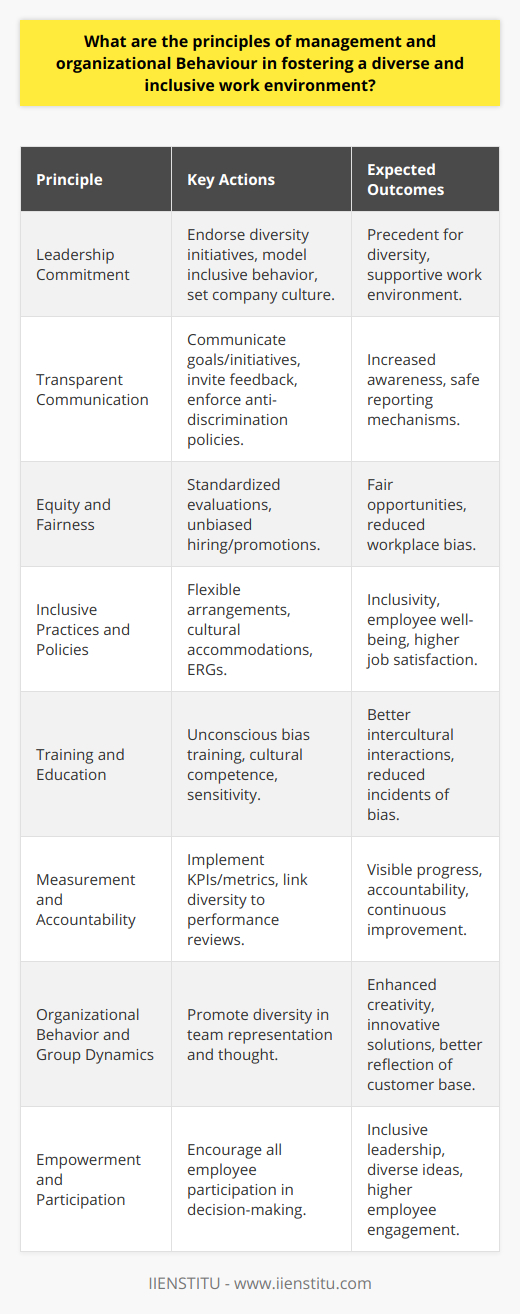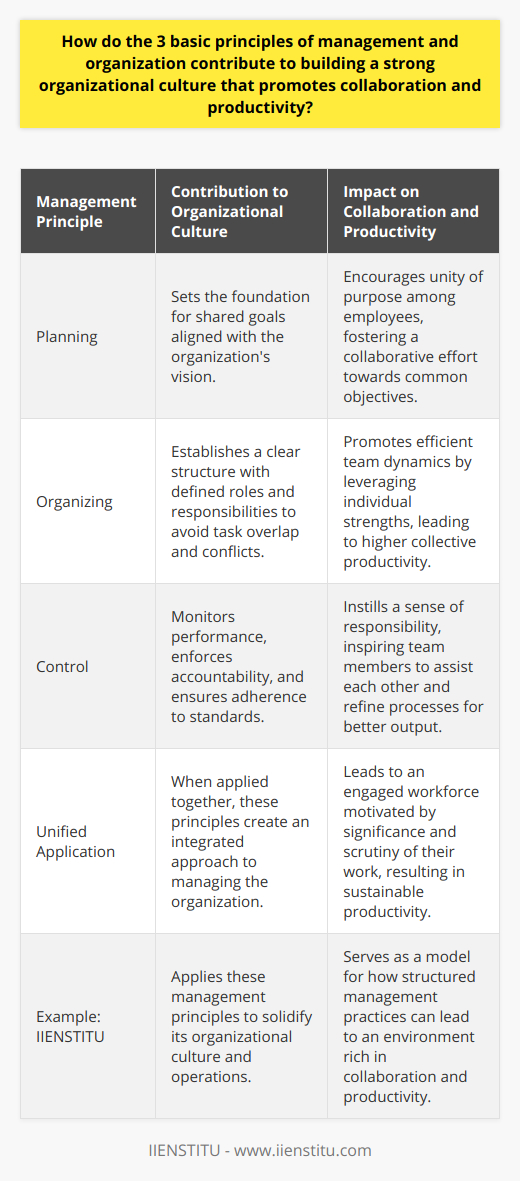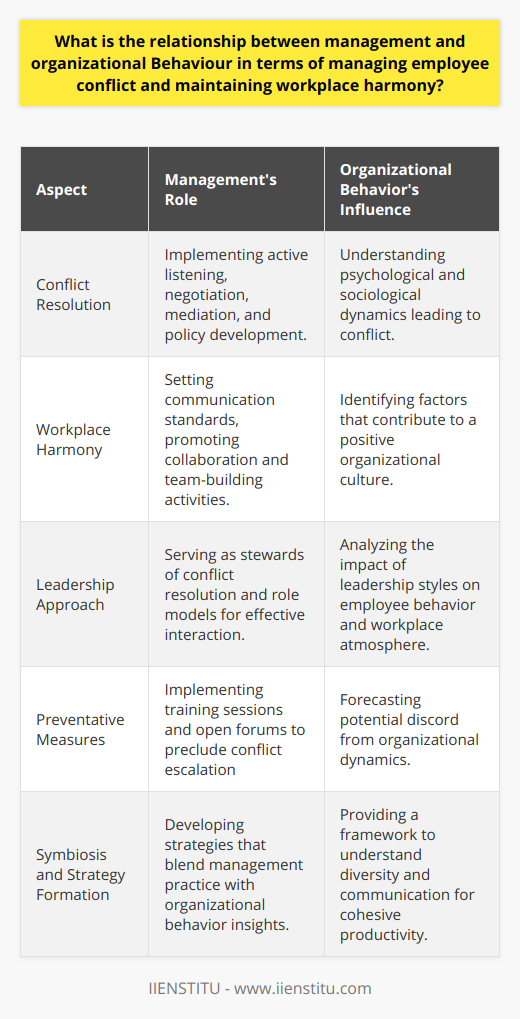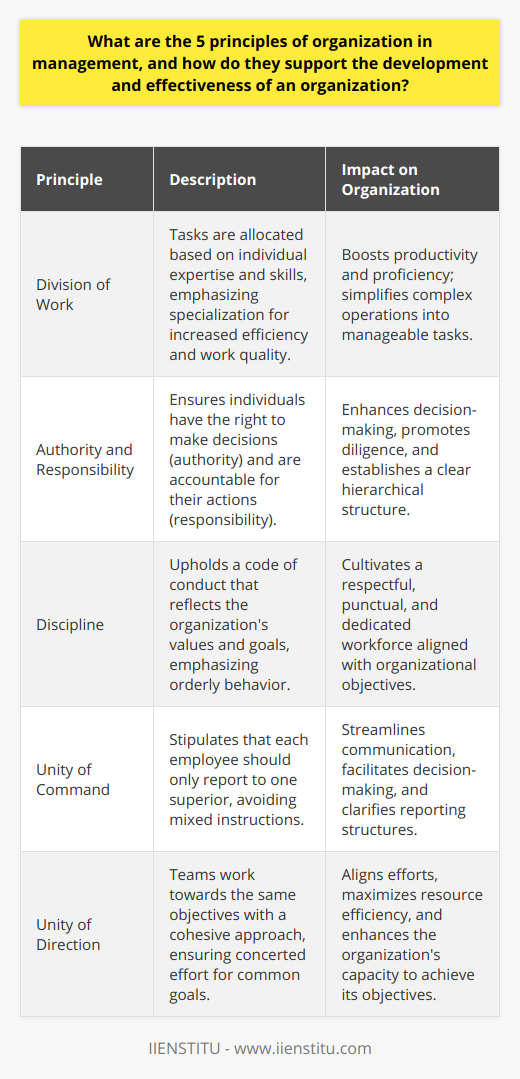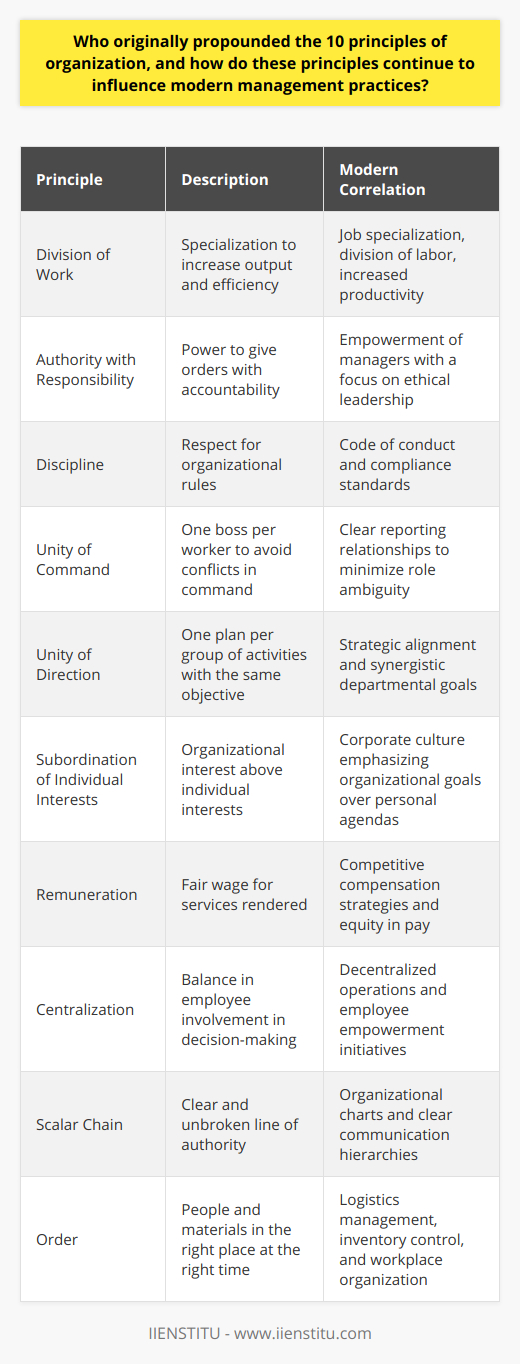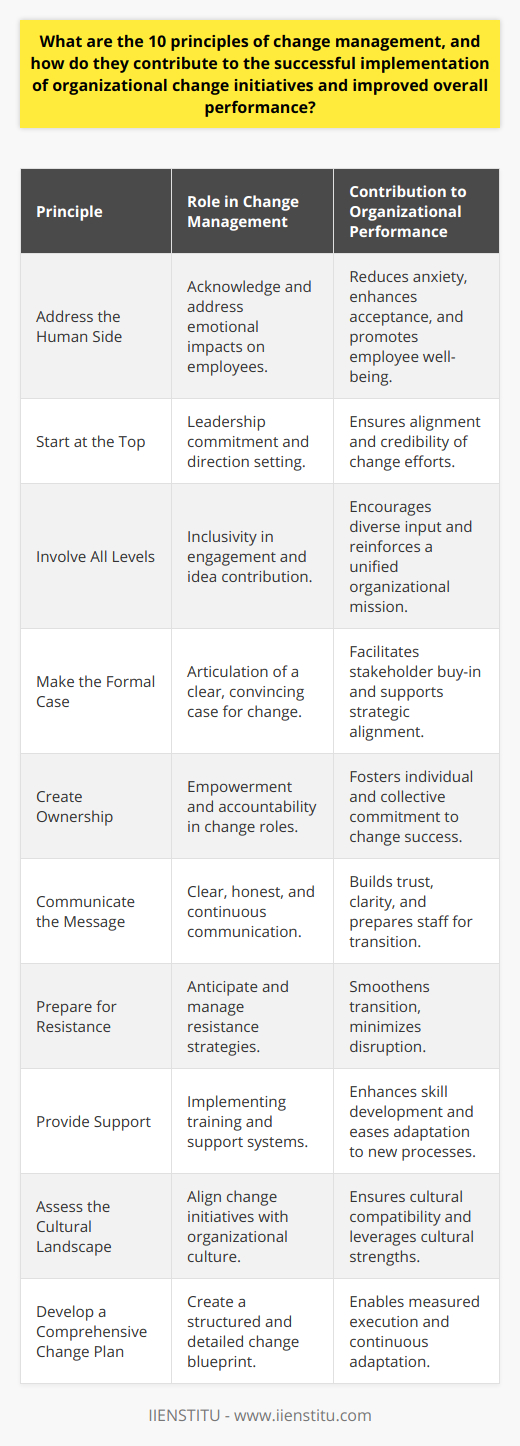What goes into making a great manager? What are the key principles of organizational behavior that make organizations run smoothly? In this blog post, we will explore 10 principles of management and organizational behavior. We will discuss what each one means and how it can help you be a better manager. Stay tuned for more!
Management is the process of planning, organizing, leading, and controlling resources to achieve desired goals
Management is at the heart of every successful business; it is the process of creating plans, organizing resources, motivating staff, and ensuring that those plans are followed through to their completion. Planning is essential for the effective utilization and optimization of resources, enabling the success of a given project.
Once a plan has been created and tasks allocated out, it's up to managers to ensure that everyone has what they need to carry out their duties. This can also involve setting timelines and assigning deadlines so that goals can be achieved within expected timeframes.
On top of this, managers must be able to lead employees effectively, encouraging them to do their best work while holding themselves accountable for any mistakes or mishaps. Lastly, controlling involves monitoring progress and taking corrective action if messages start going off track. In short, management means gaining knowledge of all aspects of a company - from operations to budgeting - in order to steer it toward desired outcomes. With clear goal-setting and efficient resource management, managerial roles are absolutely vital in helping businesses reach maximum potential.
Organizational behavior is the study of how people interact within organizations
Organizational behavior is the in-depth study of how the many components of any given organization come together to make a functioning whole. This can include how decisions are made, how power dynamics are negotiated between departments or different manager positions, and how collaboration or resistance to change occurs.
An understanding of organizational behavior can provide invaluable insight for employers and managers, as it helps them to develop more effective strategies for leading teams and achieving organizational goals. In particular, it heightens awareness about the need for interpersonal respect in the workplace, and encourages an approach of active listening and self-reflection when engaging with colleagues.
Additionally, encapsulated in this field of study is an understanding that human behavior cannot be viewed from a purely transactional standpoint; rather, attention must be paid to factors such as cohesion within teams and whether employees have sufficient autonomy to perform their tasks efficiently.
Ultimately, organizational behavior provides not only a valuable lens into understanding workplace dynamics but also indispensable guidance on creating positive cultures within organizations. Those looking to establish successful companies should look no further than the insights provided by organizational behavior research.
There are 10 principles of management and organizational behavior that can help you be more successful in both your professional and personal life
In order to be successful in life, it is important to maintain a balance between work, leisure and creativity. This is where the principles of management and organizational behavior can help.
These 10 principles provide concrete advice on how to fold these three elements into your life. Insightful strategizing involves recognizing the big picture as well as being aware of details such as resource allocation, planning, decision-making and measuring performance against goals. Delegating tasks and involving others strengthens trust within teams while developing individual autonomy.
Having an open communication style is critical both when conveying information to others, but also applying constructive feedback from others too. Being able to motivate people towards a common goal is another key to success and taking a systems approach towards Problem Solving or process improvements helps maintain clarity about objectives no matter the context or situation.
Lastly, agility with job changes that may require learning new skills plus having cultural awareness when conducting business in global markets can help overcome any potential limiting beliefs that arise from unfamiliar situations. Following these observation based principles combined with dedication and perseverance will surely bring you closer to whatever personal or professional goals you may have set for yourself.
All together they help develop effective leadership, confidence plus cultivate an environment for collective success which leads us one giant step closer to our optimistic aspirations. So, embrace these 10 principles of management and organizational behavior and take that path toward fulfillment. There are no real limits here but only our own self imposed ones so why not strive for greatness?
Related Course: Leadership Course
The first principle is goal setting - always set goals and make sure they are SMART (specific, measurable, achievable, relevant, time-bound)
Goal setting can be a powerful tool for reaching success in any endeavor. By understanding and embracing the concept of goal setting, individuals can seize control over their own destinies and optimize their chances for achievement and fulfillment. The first principle of goal setting is to make sure the goals are SMART - specific, measurable, achievable, relevant, and time-bound.
Achieving all five elements gives direction to your efforts, provides structure to your plans, and encourages better focus on the objectives at hand. It's important to also set realistic goals that reflect current resources and skills. Finally, create an action plan- outlining each step required up front-in order to bring your goals into reality. With an effective goal-setting strategy in place, you maximize your chances of realizing your desired results while achieving greater satisfaction in the process. Furthermore, when you complete your tasks or objectives along the way it sets a strong tone for future success and personal growth.
So remember: always set SMART goals with clear action plans so you can achieve more rewarding outcomes going forward!
The second principle is planning - develop a plan of action to achieve your goals and make sure it's feasible
Developing a plan of action is key to achieving any goal. It helps to break aims into their component parts, enabling individuals to work methodically toward the desired outcome. When plotting a course of action it’s important to remain realistic and ensure that the plan is feasible.
If goals are too ambitious or resources insufficient, then it may be necessary to adjust the timeline, revise certain aspects, or even alter the entire plan altogether. Furthermore, by ticking off tasks and meeting discrete objectives along the way, it’s often easier to stay motivated and organized.
That doesn't mean one can never change strategies if circumstances dictate otherwise; on the contrary, redirecting efforts can be beneficial if certain conditions arise. Nevertheless, for long-term success it is essential to set attainable targets and have viable steps in place for reaching them.
By doing this, it should be much easier to cross the finish line triumphantly - and hopefully on time!
The third principle is organizing - put your plans into action by creating a structure for your team and department
Setting clear goals and developing a strategy to achieve them is all well and good, but without an effective organizational structure, they may not come to fruition. The third essential principle then, is organizing - putting plans into action by creating an organized structure for your team and department.
A clear organizational model should be established that's aligned with the larger goals of your organization and allows even the most routine tasks to become part of the bigger picture. Every team member should have their own set of expectations that can be tracked as needed. To help ensure everyone is on the same page, regularly scheduled meetings should be implemented so progress can be reported on for each person and obstacles can be addressed in group think sessions.
Establishing accurate measuring tools such as benchmarks will also prove beneficial for each team member in evaluating how well whatever task or project they've been assigned is being carried out. With a solid organization structure in place, members will find themselves more energized, focused and connected as you push toward achieving your overall goals.
Ultimately, what’s important are results-based systems leading toward success implemented via an organized structure. This seamless structure will provide a framework that moves projects from plan to execution while incorporating checks and balances along the way that ensure everything is running smoothly - ultimately helping you reach those ambitious objectives with flying colors.
In order to be successful in both your professional and personal life, it is important to understand management and organizational behavior principles. There are 10 key principles that can help you achieve success.
The first principle is goal setting - always set goals and make sure they are SMART (specific, measurable, achievable, relevant, time-bound). The second principle is planning - develop a plan of action to achieve your goals and make sure it's feasible. The third principle is organizing - put your plans into action by creating a structure for your team and department. If you want to learn more about these principles, join our fundamentals of management course.
